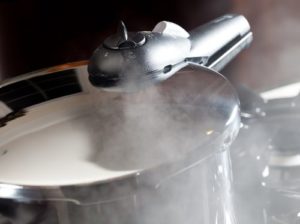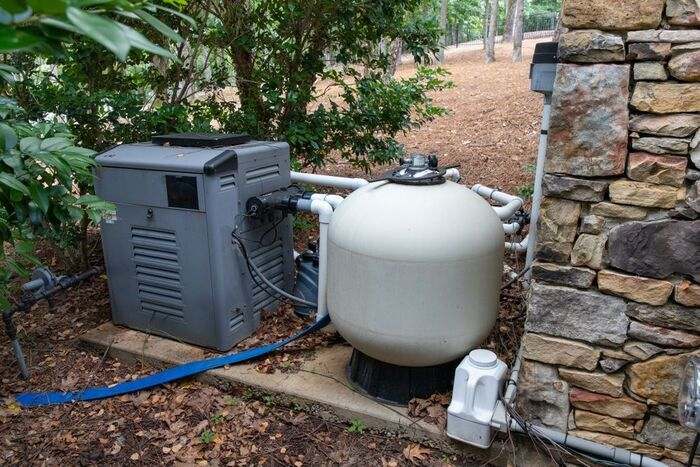 On April 15, 2013, during the 117th Boston Marathon, two deranged and disillusioned individuals set off two “improvised explosive devices” (“IED”) near the Boylston street finish line. These misguided sociopaths made them using easily procurable items: black powder, nails, and bearing balls and, most importantly, a pressure cooker.
On April 15, 2013, during the 117th Boston Marathon, two deranged and disillusioned individuals set off two “improvised explosive devices” (“IED”) near the Boylston street finish line. These misguided sociopaths made them using easily procurable items: black powder, nails, and bearing balls and, most importantly, a pressure cooker.
Of course, when we hear the term IED, we don’t think of pressure cookers. Certainly not in this way. We normally think of them as godsends. Pressure cookers prepare food by boiling liquids in a sealed pot and containing the steam produced inside. They allow even the busiest of us to be able to handle our stressful days and still be able to cook a meal for our families. That is when they are designed and manufactured correctly. However, we don’t stop to think about the amount of energy that these pressure cookers can unleash if not properly manufactured.
In 2007, over 38,000 pressure cookers were recalled by the manufacturer, Mattra, Inc. and the U.S. Consumer Product Safety (“CSP”) division due to a burn hazard. As detailed in the CPS’s recall order, the manufacturer received complaints of the pressure cooker, manufactured in India, failed to contain the hot liquids and burning individuals.
Most recently, in September 2014, a Pennsylvania resident filed suit against Wal-Mart Stores, Inc. and a Lifetime Brands, for the second and third degree burns she suffered from a defective pressure cooker. Her burns were so severe that it caused her permanent injuries that required surgery and skin grafts.
LOUISIANA PRODUCTS LIABILITY
If such pressure cooker incidents happened in Louisiana, it would be governed by the Louisiana Products Liability Act (“LPLA”). Under Louisiana law, a manufacturer is liable for the injuries caused by an unreasonably dangerous product. However, under the LPLA, a product is unreasonably dangerous if and only if:
(1) The product is unreasonably dangerous in construction or composition;
(2) The product is unreasonably dangerous in design;
(3) The product is unreasonably dangerous because an adequate warning about the product has not been provided; or
(4) The product is unreasonably dangerous because it does not conform to an express warranty of the manufacturer about the product.
The Act further clarifies that a product is unreasonably dangerous in construction or composition if, at the time the product left its manufacturer’s control, the product deviated in a material way from the manufacturer’s specifications or performance standards for the product or from otherwise identical products manufactured by the same manufacturer.
With regards to design, the Act explicitly defines a product being unreasonably dangerous if, at the time the product left its manufacturer’s control:
(1) There existed an alternative design for the product that was capable of preventing the claimant’s damage; and
(2) The likelihood that the product’s design would cause the claimant’s damage and the gravity of that damage outweighed the burden on the manufacturer of adopting such alternative design and the adverse effect, if any, of such alternative design on the utility of the product. An adequate warning about a product shall be considered in evaluating the likelihood of damage when the manufacturer has used reasonable care to provide the adequate warning to users and handlers of the product.
Similarly, a product is unreasonably dangerous because an adequate warning about the product has not been provided if, at the time the product left its manufacturer’s control, the product possessed a characteristic that may cause damage and the manufacturer failed to use reasonable care to provide an adequate warning of such characteristic and its danger to users and handlers of the product. Moreover, a manufacturer is liable for the damage caused if after the product has left his control, the manufacturer either:
(1) acquires knowledge of a characteristic of the product that may cause damage and the danger of such characteristic; or
(2) who would have acquired such knowledge had he acted as a reasonably prudent manufacturer.
Finally, a product is unreasonably dangerous when it does not conform to an express warranty made at any time by the manufacturer about the product. However, the express warranty must have induced the person to use the product and his damage was proximately caused because the express warranty was untrue.
However, a manufacturer ‘s liability is not without its limits. For example, a manufacturer is not required to provide an adequate warning about his product if any of the following scenarios apply:
(1) The product is not dangerous to an extent beyond that which would be contemplated by the ordinary user or handler of the product, with the ordinary knowledge common to the community as to the product’s characteristics; or
(2) The user or handler of the product already knows or reasonably should be expected to know of the characteristic of the product that may cause damage and the danger of such characteristic.
Additionally, a manufacturer of a product shall not be liable for damage proximately caused by a characteristic of the product’s design if the manufacturer proves that, at the time the product left his control:
(1) He did not know and, in light of then-existing reasonably available scientific and technological knowledge, could not have known of the design characteristic that caused the damage or the danger of such characteristic; or
(2) He did not know and, in light of then-existing reasonably available scientific and technological knowledge, could not have known of the alternative design; or
(3) The alternative design was not feasible, in light of then-existing reasonably available scientific and technological knowledge or then-existing economic practicality.
Finally, in order to prevail under the LPLA, one is required to show when the unreasonably dangerous characteristic came into existence – which may require a different timeline depending on the type of unreasonably dangerous product. For example, the characteristic of the product that renders it unreasonably dangerous in construction or composition must exist at the time the product left the control of its manufacturer. But if the product is unreasonably dangerous in design or due to inadequate warning, the characteristic of the product that renders it unreasonably dangerous must exist at the time the product left the control of its manufacturer or result from a reasonably anticipated alteration or modification of the product.
If you or a loved one has suffered from an injury due to a defective product, learn about your legal rights from an experienced Louisiana personal injury attorney by filling out our free, no obligation case review form located on this website.
Free Case Evaluation
More About HKGC
Other Product Liability News
Billions of consumer products are manufactured every year. Unfortunately, mistakes […]
Over the years, Americans have seen many high-profile product liability […]
Summer is around the corner, and countless people will soon […]







